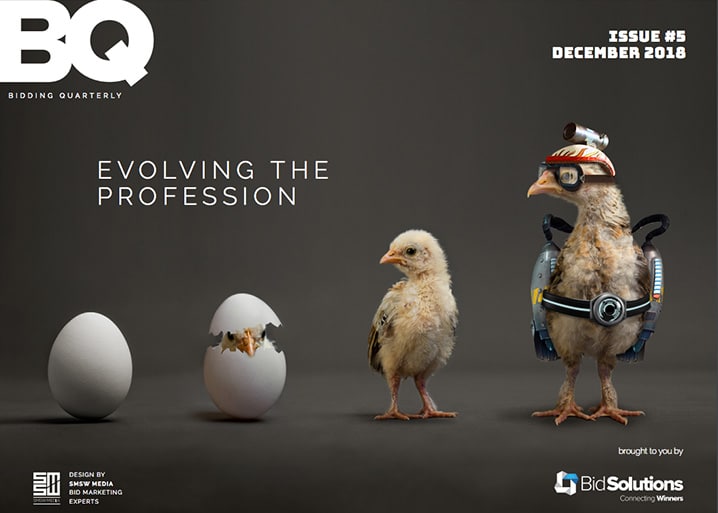Johnny 5 said, “More input! More input!”
Procurement teams are turning increasingly to transparent, real-time, digital data to make the exercise of procuring suppliers more efficient and cost-effective. Automated supplier performance monitoring, for example, relies on data about the supply chain’s work for the procuring supplier and others. The trend is for the use of data to show how value is added from a strategic perspective. The shift is towards evaluating procurement using measures linked to strategy and financial metrics.
Similarly, in bids, we have to convey measurable benefits by showing how the bid adds value to the buyer in terms of operations, human capital, service delivery and logistics, among other disciplines.
The bid profession will remain an evolving one in the year ahead. How will data play a role in helping bidders to be better positioned to show clients how value will be added?
The following are examples of bid initiatives that use data. These have arisen in my conversations with the bid community in recent months. Will these make a difference to your bidding in 2019?
- Developing knowledge management systems to retrieve critical bid information, e.g. coded examples of project activities to identify evidence examples. Gathering evidence remains a challenge for many bidders, often because past projects do not, at face value, reflect buyers’ exact requirements. By coding types of activity – e.g. resolving local stakeholders’ concerns – the bid team can rapidly interrogate past projects for evidence of experience that demonstrates the ability to add value. For the stakeholders’ example, sub-codes could be used for, say: stakeholders’ concerns about construction traffic; traffic near schools; and effective collaboration with school staff, a supplier competence sought by the client of, say, an infrastructure project near schools.
- Better bid management, e.g. by analysing past bid performance and lessons learned, an important step in the bid lifecycle. The data will probably be qualitative, with topics including bid team structure, involvement of sales staff, response planning, and gateway reviews. The objective is to improve the process of bidding to help keep focus on how value will be created for the client.
- Using measurable data to record the benefits of health interventions, e.g. anonymous data on staff performance (sick days, performance review scores, etc.) following participation in mental health programmes. Buyers are placing increasing importance on mental health in their own and suppliers’ workforces. Measuring this phenomenon in the workplace is becoming a greater requirement as part of learning how to improve workforce wellbeing.
- There is much talk of technology in bids – e.g. drones, 3D printing, and visualisation – which can provide powerful tools for demonstrating value to clients. Data is shown visually in ways that relate to clients’ operations, demonstrating value-adding benefits via simulated user experiences.
How will your bids demonstrate value to your clients’ value chains in 2019?
This article was written by Holger Garden.

